Laura Bell Bundy talks country dance grooves, Patsy Cline trap music remixes
"I went from country to hip-hop and back. This just seems like a natural evolution."
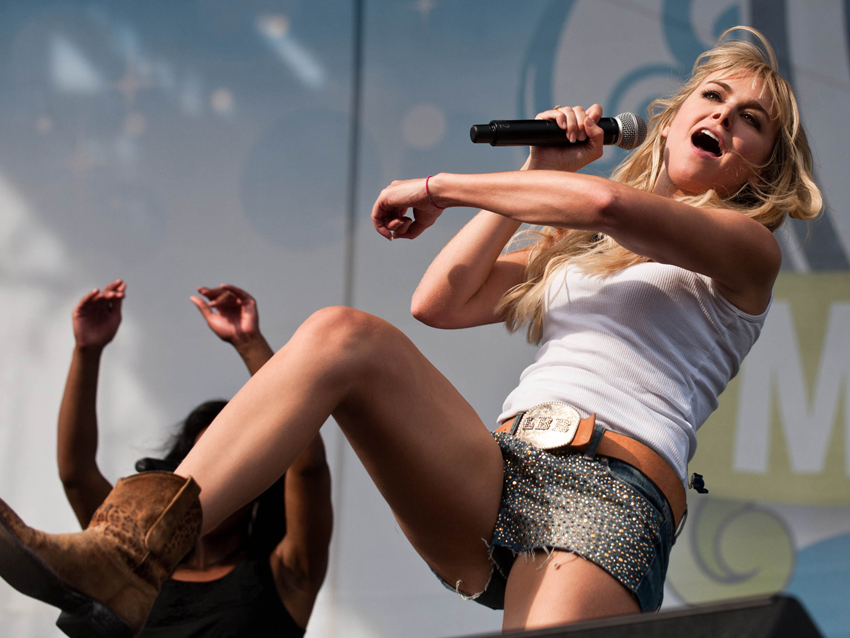
Laura Bell Bundy talks country dance grooves, Patsy Cline trap music remixes
You may know Laura Bell Bundy as the smart-mouthed blond who holds her own opposite Charlie Sheen on the FX sitcom Anger Management. She’s delivered plenty of zingers in that on-air role. Get her on the phone for an interview and you find that even when the show’s not on, she always is.
One minute Bundy’s rattling off a list of the numerous facets of the entertainment business to which she’s given time and energy, from television and Broadway to writing, recording and co-producing spunky, danceable country singles, accompanied by her production company’s dance-centric music videos. The next minute she’s taking colorful liberties with a familiar saying.
“If the world is your oyster,” she begins, “you might as well fucking go for it and try everything. I don’t even like oysters, but if there’s enough Tabasco, I’ll do it.”
Aside from her taste in seafood and metaphors, and her primetime exposure, Bundy has one Mercury Nashville album in her discography (2010’s Achin’ And Shakin’) and a current spot on the Big Machine Records roster, where she’s one of the only current female country acts focused on finding clever ways to tailor her music to dance clubs. She talked with MusicRadar about her underage club-hopping history, songwriting over hip-hop beats and her savvy, multimedia role model, Dolly Parton.
There’s been so much cross-pollination between country, dance music and hip-hop over the past few years, but to my knowledge, you’re the only woman artist who’s really made it her priority. Did you envision your music career heading in this direction?
“You know, I don’t know what I envisioned my music career being. All I ever really wanted to do is make music and be on stage and sing it. The truth of the matter is that I am so in love with the element of surprise, and I’m so bored with just copying what everybody else is doing. I have no interest in replicating what they’re already doing. I want to do something unique and different if I’m gonna make music.
“I went to an EMI songwriters conference a couple years ago. It had always been a hip-hop conference. Then it had become a pop conference, and then they included rock, and then that year that I went they decided to include country writers. All these different labels came in, and they would play their artists’ projects, and the majority of it was hip-hop. It was really, like, heavy trap beats and [Roland] 808s. I had just recorded Two Step and done a video for it, which they played, and it happened to have [country rapper] Colt [Ford] in it. I also used a hip-hop track and then wrote a country song over it. The hip-hop guys there were like, ‘Oh, that’s really cool what you’re doing.’"
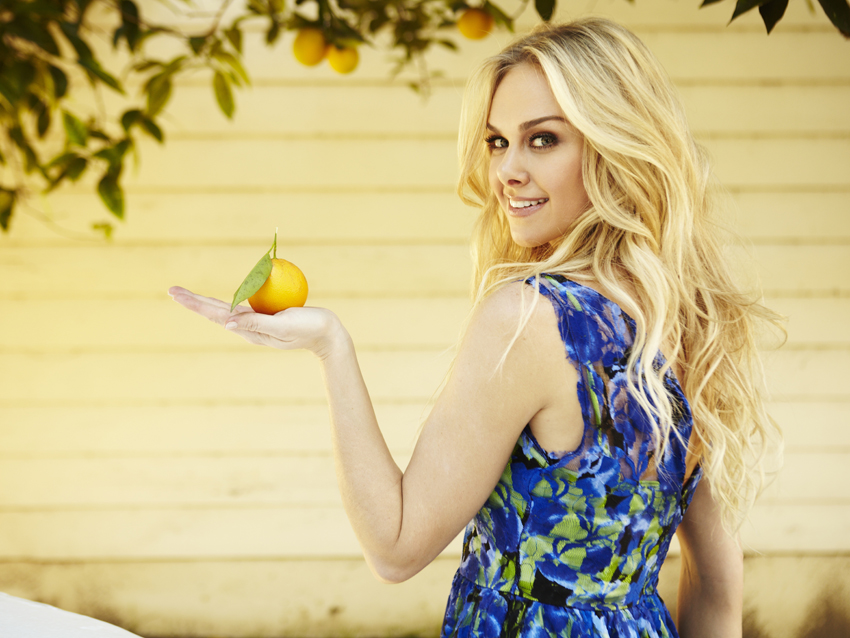
On her influences
“I loved the beat, and I put it with some banjo. And we made music that fans of country music could dance to. Colt Ford basically said [that] he was a huge hip-hop and rap fan, but he couldn’t relate to the lyrics. What he related to were stories coming from country songs. So he could rap on a country song – that made sense to him. So, in many ways, I’m taking what would be this combination of hip-pop – you know, not hip-hop but hip-pop, like a Beyonce hip-hop song or even a Nicki Minaj hip-hop song, which is really what pop music has become –and I put a country storyline, a storyline that is familiar to the country audience, that is familiar to me, that I can relate to, that is PG-13 or less.
“You know, when I was in high school, I went to a school in Kentucky. I would drive my jeep to school, and I would have Dixie Chicks and Shania Twain and Faith Hill. That was the mid-, late ‘90s. I would have [country] in my car, but then I would also have Tupac and Biggie on mixtapes. Like, I went from country to hip-hop and back. So this just seems like a natural evolution.”
You came to country music with a much broader performing background than most artists. How have your experiences with musical theater, dance choreography and queer dance club culture prepared you to do what you’re doing?
“I moved to New York after high school, when I was 18. I was with my best friend, who’s from Kentucky. All we wanted to do was go out and dance. Then we got fake IDs so we could. It was never about drinking – it was about going out and dancing and having fun. We went out to clubs in New York in our cowboy boots and we just got down. We didn’t like wearing heels, because you couldn’t dance as well. So definitely that is part of my awareness.
“I always danced as a kid, but being a performer who did musical theater, I always sang and danced at the same time; it’s a very natural thing for me. So to have beats in the mix of the music allows me to move, allows me to keep the energy up in my live show. It allows me to do a show that people come to see, not just hear.”
Was your single Giddy On Up your first step in the country club direction? There song was remixed, and it inspired a bunch of dance routines, and it even wound up in the video game Just Dance 3.
“I didn’t know what was gonna come out when I made that Achin’ And Shakin’ record. I started out with just a bunch of sad ballads, until I met [producer] Mike Shimshack and I was like, ‘I want to do Amy Winehouse for country.’ So he started making all these ‘60s tracks and adding elements of fiddle; then I was writing like Dolly Parton 9 to 5-sounding songs over these tracks.
“What people seemed to respond to was a high-energy, fun, danceable musician, so that gave me the courage to do it. Because if I hadn’t had the success with Giddy On Up, especially in the dance marketplace, the country dance marketplace, I probably wouldn’t have had the courage to do what I’m doing now.”
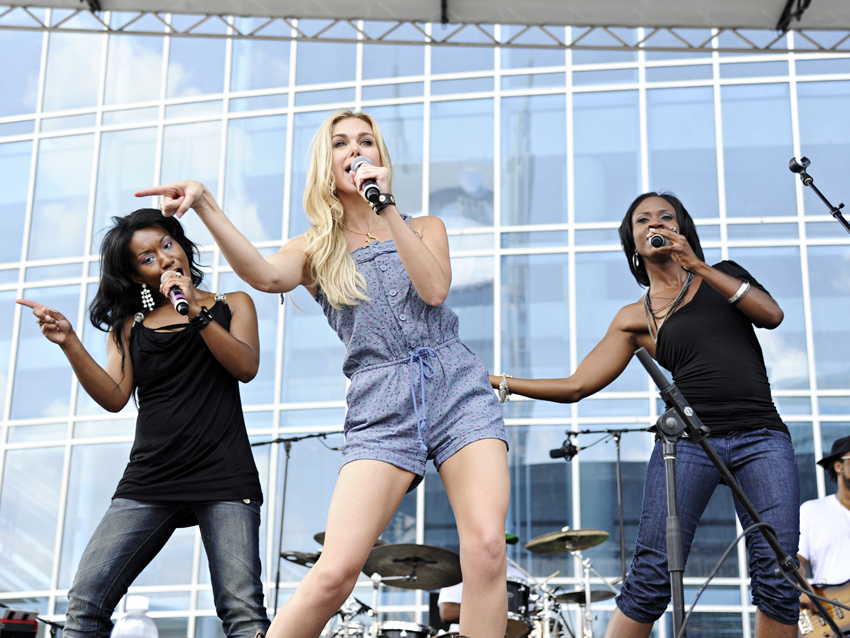
On country-meets-hip-hop line dance routines
You mentioned how important it is to you to do something visually engaging. You got hooked up with the group Dance Y’all on the Rascal Flatts tour, and they did country-meets-hip-hop line dance routines while you sang. How did that happen?
“I had started to figure out that if I were to do this type of music, the live [band] that I was going to have would be a DJ and fiddle player, banjo player, mandolin player, two backup singer-dancers and me. In that configuration, you’re basically juxtaposing very traditional bluegrass or country music against a beat. So we were doing lots of mash-ups and stuff like that. So when Dance Y’all came around, it was like, ‘OK, there’s gonna be a DJ and there’s gonna be dancers. This could be cool.’ I do think that there is much more interest in country music as party music than every before. So I really thought that if done well, it could really be an appealing thing.”
Now you’re recording dance songs like Two Step and Kentucky Dirty and making videos for them featuring dance routines, which is something I haven’t seen any other country club act doing. Are you aiming your singles at dance club DJs?
“Absolutely. Dance club DJs, people who want to have a party and have a good time. That’s where I’m aiming the music, although I do think that there can be more meaningful songs, just with that sound, you know, eventually… I think especially women. That’s how we [choose] our music: ‘Can we cry, or can we work out and shake our junk?’ That’s the music that we are drawn to.”
And is your music being embraced by club DJs?
“Actually, they did a survey recently that came out – I think it was a dance club chart on country dance songs – and Two Step was number three for the year. Number three for the year and released in July – I think that was a pretty good sign. And then I heard the Denver Broncos dance team danced to it at their half-time show during the playoffs. And it’s been on in the background at NBA games when the dancers dance. So I’m like, ‘OK, yeah. People are dancing to this!’ My question is, can you break ground with pebbles? I don’t know if you can. Sometimes when you do a single and it’s not embraced by radio, that single is a pebble. If it’s embraced by radio, it’s a big old rock. So I’m trying to work on a boulder.” [Laughs]
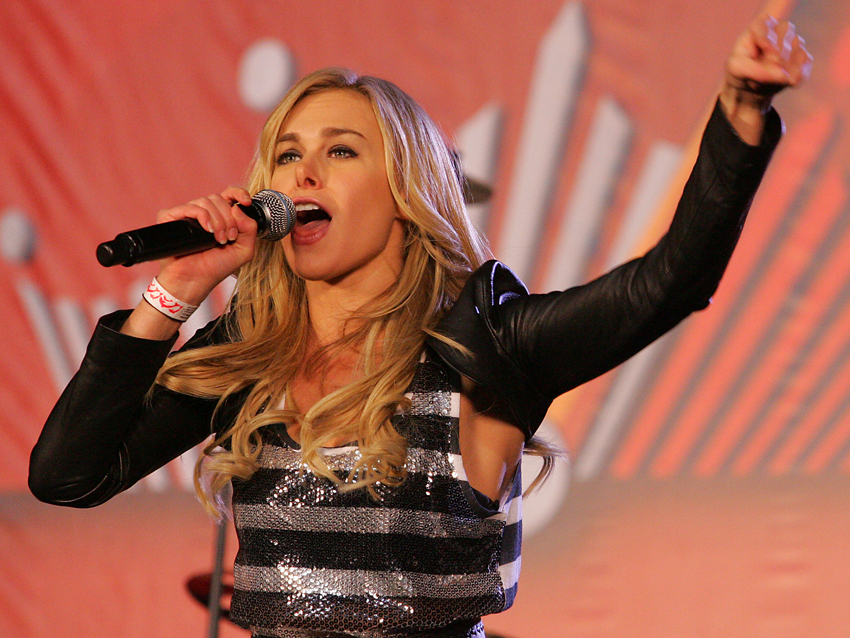
Hands-on production
I do have to wonder how you’re getting much music made with your television filming schedule.
“I feel really fortunate right now to be doing a television show [Anger Management] that has a lot of hiatuses. We film two episodes in a week, so we’ll film, like, four or five weeks in a row, we’ll get ten episodes done, and then we’ll have four or five weeks off. And in that time, I’m committing to doing this.”
How do you approach writing over beats?
“Well, I will say that the process depends on your collaborators, really. There’s a writer named David Ryan Harris, who’s also an artist – he and I work amazingly together. It’s just from the ground up, putting these beats together, because he also understands folk music and bluegrass music. We’re putting the ‘heys’ and the ‘hos’ and all that stuff within the hip-hop beats and adding mandolins.
“Sometimes I’ve worked with producer-writers from the hip-hop world that will really lay out a track. They will create different sections on that track, so it’s obvious which section should be the first verse or the second verse or whatever. Then I will write to that. I’ll come up with a melody and lyrics based on a particular idea where I think that that music sounds like this feeling. Sometimes we get lucky and I’m either in Nashville with that track or someone from Nashville comes to where I am right now in LA. I have a studio in my house, and we work in there and we write on top of the track and I record a vocal. I have done some things that were simply writing to guitar and adding beats later. It’s a little bit harder to do that.”
The Beats and Banjos mixtapes on your website list your co-producer as Huff D. I’m guessing that’s either Dan Huff or David Huff.
[Laughs] "It’s David Huff!”
What does being hands-on in the production process look like for you?
“I’m not a great engineer, so I try to work with someone like David, who’s a better engineer than I am. I’m learning things about it and I’m getting better with it. I can always press ‘record’ and record my vocal and comp my vocal or something like that. What I’m also doing is getting DJ programs on my computer, and that’s how I’m starting to mash things up. When David and I do one of these mixtapes, I'll be going and getting all the country songs and hip-hop songs that are at that same beats-per-minute, and figuring out what their keys are and seeing if they can [work] together. So that’s the homework I do first.”
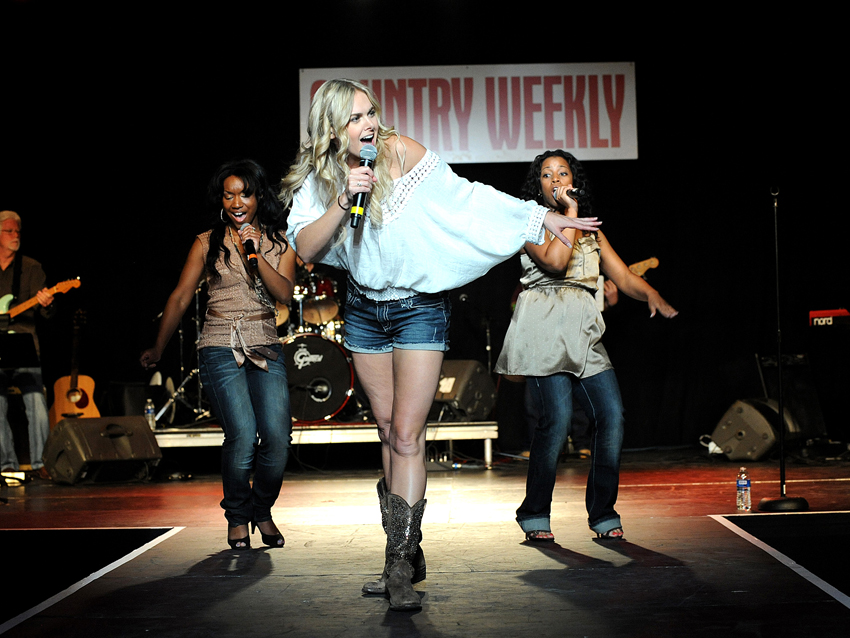
On software
You’re casting the net way more broadly than a lot of country mixes that I hear. There are the usual suspects like Florida Georgia Line, but there’s also some Patsy Cline.
“You know, those Patsy Cline songs were always at, like, a waltz tempo [sings a bar of Crazy], which would also be at a trap tempo. You could really add a lot of beats to a Patsy Cline song, because there’s a lot of space in her songs.”
What kinds of software and applications are you using in your studio?
“Well, I use Serato. And I’m starting to get some equipment from Numark, DJ stuff, because the live show is incorporating it now. One of my fiddle players is kind of interested in learning to DJ and play fiddle at the same time, which is awesome, right?”
I haven’t seen anybody else do that – yet.
“I’m just crazy enough to do it. Oh, and Pro-Tools. I obviously use Pro-Tools.”
You’ve made an interesting point about this kind of country dancing, that it allows women to be independent participants. They don’t have to wait to be asked to two-step. What kinds of responses are you getting from female fans?
“You know, I feel like the females have responded the best. They hear the songs and it says, ‘I’m gonna wear what I want to / ’cause I want to / I don’t need no man.’ They’re like, ‘OK, raise your cocktail! We’re gonna go out!’ I feel like the women definitely gravitate. It’s kind of a girl power song, the way I did the video, too. It’s a working girl. She gets off work, and can be working hard in a factory, and then look hot-as-hell and go out and start a party. Women are always first to hit the dance floor – they are. Guys are always like, ‘No, I just need one more drink. Oh, I don’t really like this song. This song doesn’t make me wanna dance.’ I’m like, ‘Oh, so Radiohead does?’”
I understand that you have your own production company and are producing your own videos. What does that involve at this point?
“I knew, based on my experience of having done music videos, that I could produce music videos. And I’ve been fortunate enough to be at labels that allowed me the freedom to do so, and trusted me. So I decided to form a production company to do it. It’s kind of a learning process. All of the administrative stuff wasn’t necessarily where my head was when I started it, but I have learned a lot about it. I do music videos. I do Cooter County, which is my comedy stuff.”
I’ve watched Cooter County clips online.
“When I was full-time doing music, I really wanted an outlet to do comedy again, so that made sense for me to do Cooter County. I loved Hee-Haw growing up. Cooter County is like Hee-Haw on crack.”
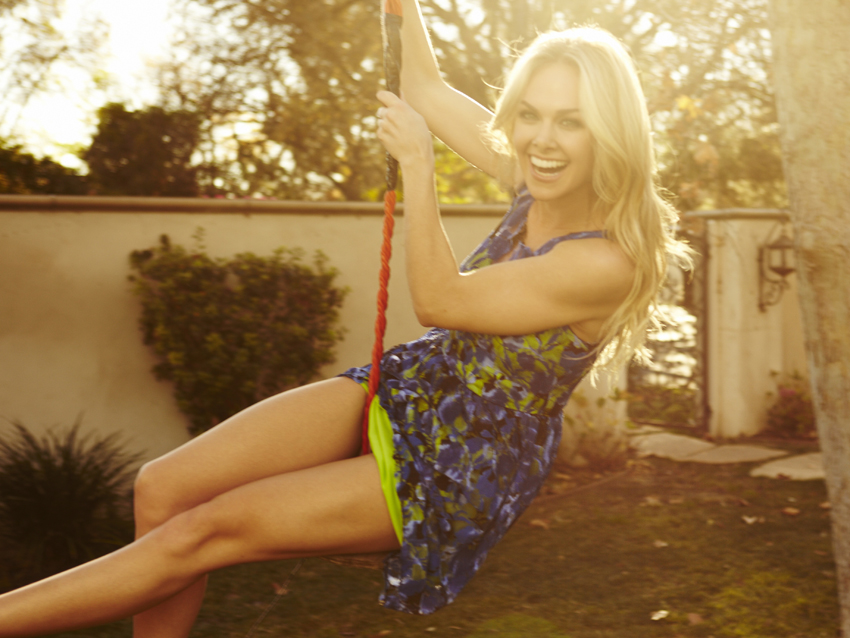
Driving the ship
It’s clear that you’re the one driving this ship and generating the ideas.
“Well, thank you. You know, I think another reason I started the production company was because I know I have a lot of ideas. Probably 80 percent of my ideas are, you know, trash can-worthy. But there little elements of gold, which I want to develop, and the production company allows me to do that. It also allows me to have control.
"I don’t really consider myself a control freak; I’m more of a collaborator. But I am excited about my creative wind. I wanna go. So by having a production company, and writing my music, I can within one month write a song, record that song and shoot the music video. The only thing that would stop me is if the label goes, ‘We’re not putting it out.’ [Laughs]
“Every single part of the process is important to me, in terms of making music. All of it. The songwriting, the production, the album cover, the music video – it’s all a part of the artist, right? So there’s a vision there, and that’s the fun part. And by educating myself in production – TV production or music production, by being an actor, by having stage experience, by working on comedy – it’s almost like going to these little small towns that you have to go to in order to get to the big city. And the big city is the fully realized artist.
“Because I’ve decided to dabble in this or that, I’ve learned a lot, and I appreciate the effort of all of the people involved. I could’ve had a music career where I just decided to listen to songs and sing them and have other people put the videos together, or have the producer pick my songs or whatever. I just have such an appreciation from the ground up of every single person that is involved in the making of a creative project.”
I’d say you’re laying the foundation for a multi-faceted career.
“Yeah, I think so. I mean, who’s to say where I’ll be in 10, 15 years, and how music is gonna evolve and change, and how entertainment is gonna change. Because entertainment is the key for me. It’s about entertaining people; it’s always been about entertaining people, and entertaining them to the best of my ability means to learn all of these things.
“I may be entertaining people when I’m 60 years old by being a producer, or funding a production company or label. That may be how I entertain, because I’m 60 years old. Or maybe I’ll be trying to get it done like Dolly Parton. The woman is a mogul.”